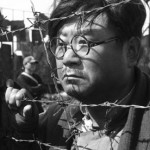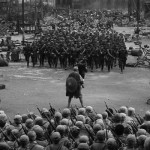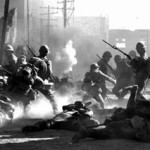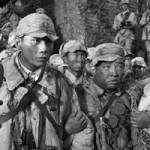The facts of the “Rape of Nanking” speak for themselves: during the siege, assault, occupation and eventual withdrawal from the Chinese capital city of Nanjing from 1937 to 38, anywhere between 200,000 and half a million citizens, mostly innocent civilians, were brutally massacred, and anything up to 20,000 women and children systematically raped. The sheer senseless savagery of the act matches this with almost any of the worst atrocities in history, but for the scale of the Holocaust.
To make a film of any sort about these events required more nerve than most film-makers usually acquire (to this day it engendered massive distrust by the Chinese of anything Japanese, despite the rising trade links between the two countries; for most Japanese it spells total shame.)
Having achieved backing to make the film, Lu Chuan’s film is little short of an epic in scope and senseless, chilling brutality. As Kate Muir of the Times put it, it is unrelentingly “harrowing, shocking and searingly emotional.” It pulls no punches, escaping the Chinese censors with just a few cuts of the most visceral scenes, though this is one picture where the violence is not remotely gratuitous – without it we could never understand just how vicious was the Japanese occupation.
But amid the slaughter, there are human poignancy, pathos and even moments of joy. Characters such as John Rabe, Mr and Mrs Tang, Kadokawa and Jiang Shuyun, all based on real people who lived through the occupation, tell the story with compassion. The emotional trauma gives way to survival instinct in the face of death all around, and ultimately speaks volumes for the resilience of the human spirit.
Muir considered that “..the picture has the grandeur of a classic. It should be witnessed.” If you can make a movie of such events and emerge with dignity, you have made a massive step forward in the art of film-making. Lu Chuan has achieved such a feat.











Book marked, I really like your blog!